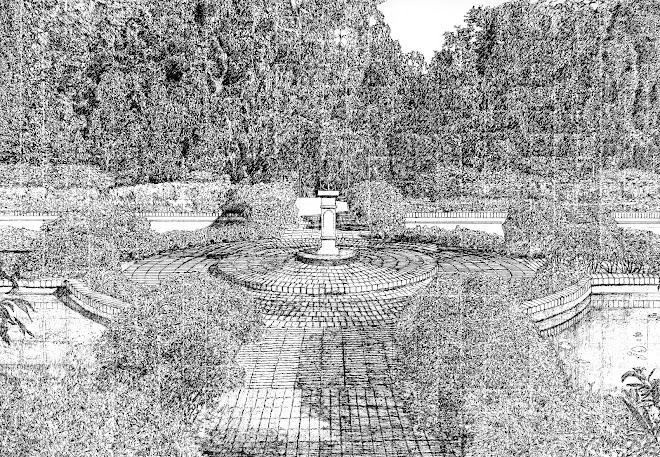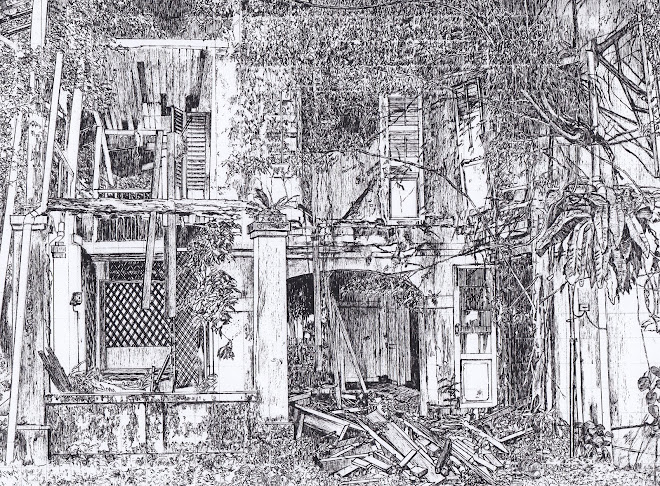My proposed work for the “Is that a temple?” exhibition:
In this writing, the question of “Is that a temple?” is directed at three things: a) the building b) the body and c) the images.
The building
I cannot remember when I first discovered the temple at Marne Road. It was concealed by a tiny forest and I thought it was in ruins. The first time I wanted to go near it to take pictures, I saw two black dogs and I decided to go back another day instead.
It was two to three years later when I returned to the area. I deliberately took a different and longer route to avoid the black dogs. I made a detour round a canal and avoided the grass area.
To my surprise, I stumbled upon a red-light district near the temple. There were a few old uncles and foreign workers; not a single lady was in sight. The quarters had narrow passages lit by pink fluorescent tubes. I was afraid, I did not know why. Perhaps the black dogs would suddenly appear. Or perhaps it was obvious that I was at a place where I was not supposed to be. I quickly slipped my camera into my bag. Then I left the quarters and hurried towards the temple. There, I managed to take one or two pictures before I saw one of the black dogs a few metres away. I quickly left the place.
I never found out what gods they worshipped at the temple. I only guessed that it was a Chinese temple, for there was a brick joss burner. I never found out why there is a red light district near the temple. Perhaps someone more adventurous and daring can find out the answers to these questions.
The body
Is that a temple? I know for sure that the physical building is a temple, and it is neither abandoned nor in ruins. However, it is interesting that the temple is next to a red-light district where people sell their bodies.
The question of ‘Is that a temple?’ is now directed at the human body. According to the Bible (1 Corinthians 6:19 – 20), the body is the holy temple of God, and one should honour God with one’s body and not defile it.
Even though we do not sell our bodies and not all of us are believers, the idea that one should honour one’s body like a holy temple is worthy of consideration. What about junk food, smoking, alcohol, sleep deprivation, working overtime, slimming pills, plastic surgery etc.? It might be easy to point out that the prostitutes are defiling their bodies, but how are we treating our own bodies? What about your body – is that a temple? How do you treat it?
The images
I am digressing. Let me return to the beginning of the story. I wanted to take pictures of the temple. Here are two of the photographs I had taken:


In the first picture, the grass area and the forest seem to be the main subject; the temple is almost invisible. In the second picture, the temple is concealed by the vegetation, and the details of its architecture are not clearly visible.
Even though I had taken two photographs of the temple, it is not clear that the main subject of these photographs is a temple. Because the temple is concealed rather than revealed, it prompts the viewer to ask “Is that a temple?” when confronted with these images. One might be thinking that I was taking pictures of a forest if not for this written text or without the context of this exhibition.
These images were created as a result of how I viewed the temple, and the viewer’s interpretation of these images is influenced by this narrative-discourse. It might be of interest to the viewer that these images show what I saw when I walked past the area for the first time… …
Conclusion
It began with a walk which led to the discovery of a hidden temple. Photographs were taken, and the question of ‘Is it a temple?’ was raised and directed at the building, the body, and the images.
I do not want to end this discourse here, for there are still other issues to consider. We have not asked ourselves exactly what a temple is. Surely it is more than a building with unique architectural features? We need to consider the practices within a temple, as well as how the temple is managed. What if the priests and members of religious orders take advantage of their followers? What if there is a mismanagement of funds? What if a temple is managed like a multi-national corporation? Is that a temple?









